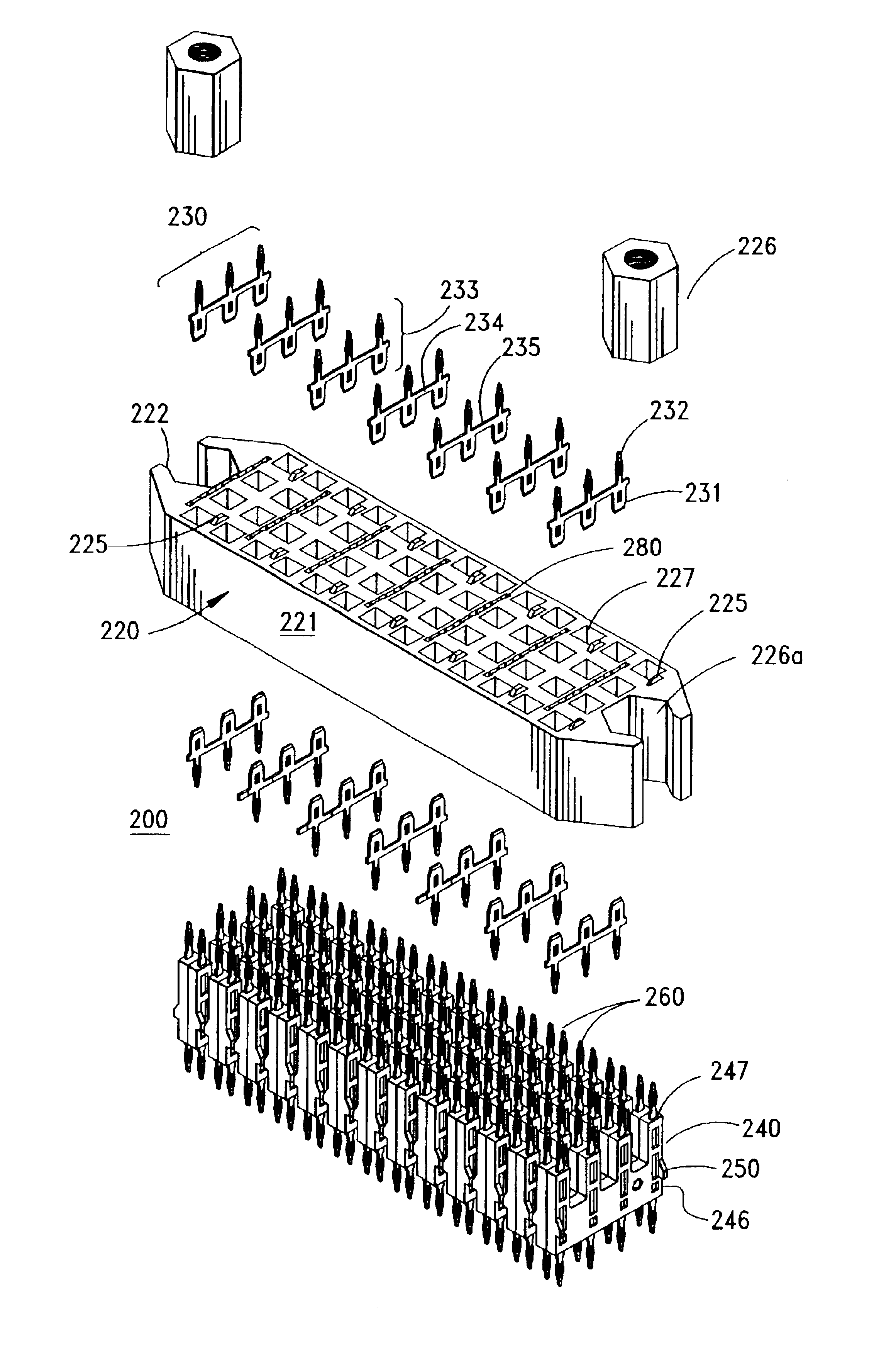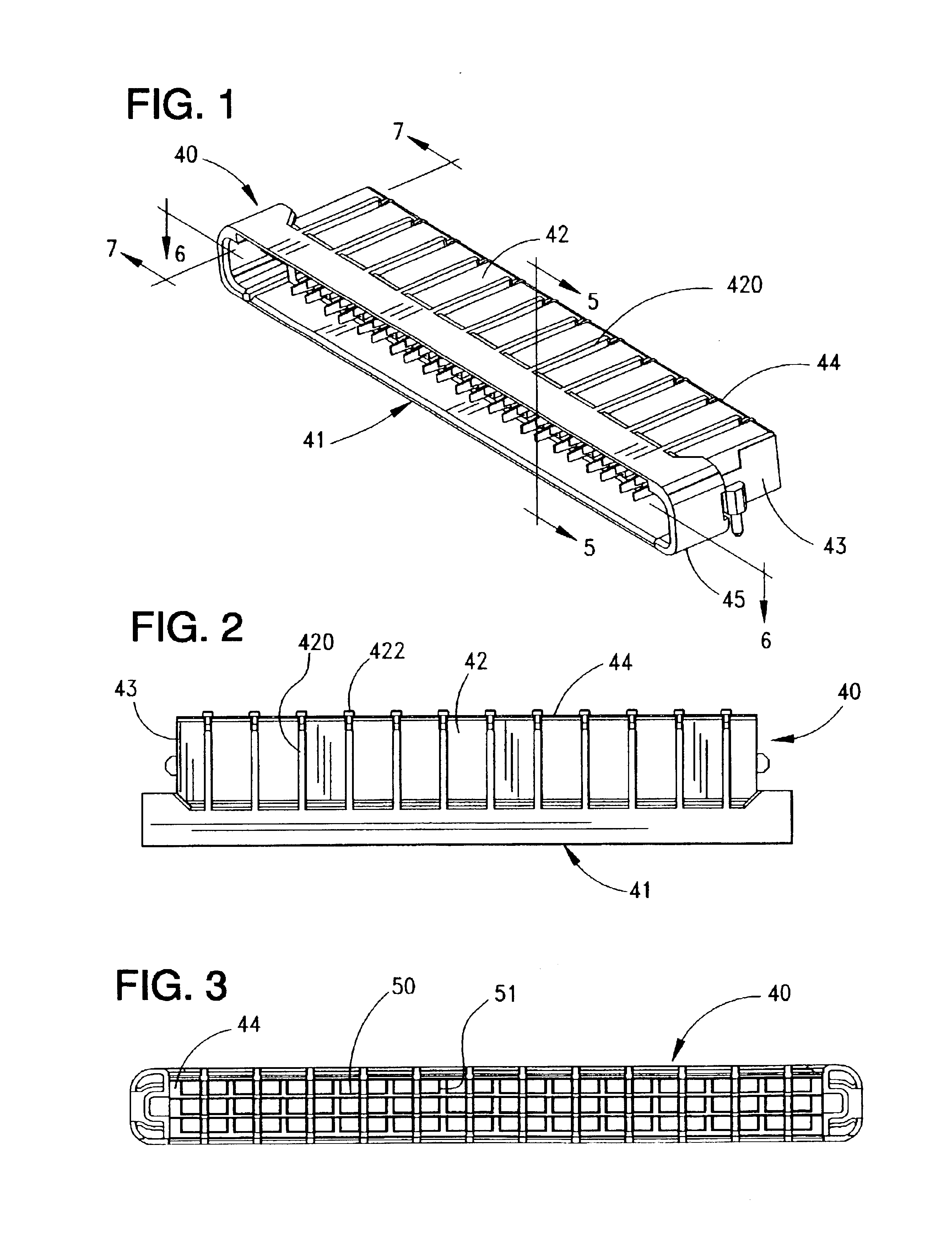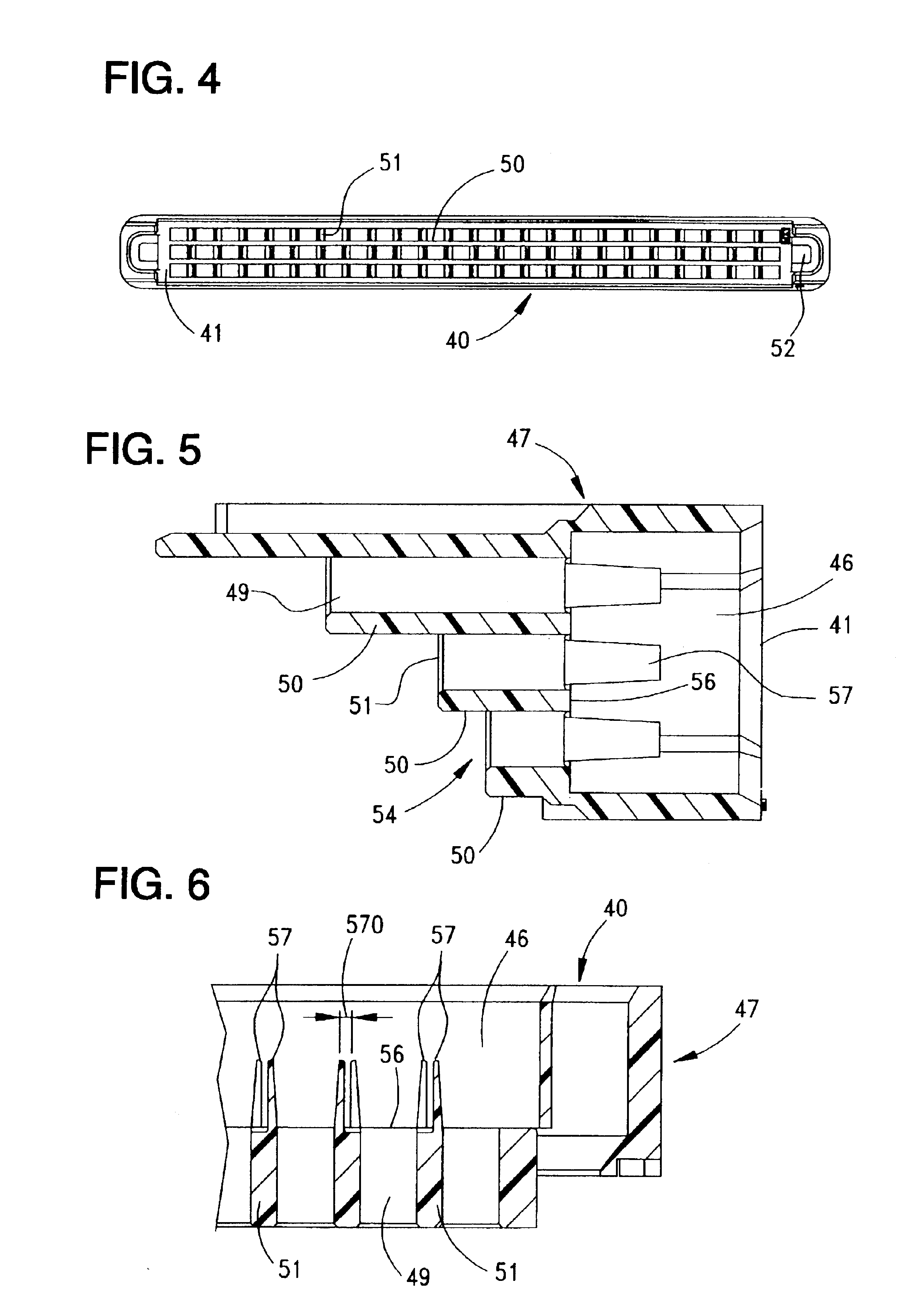Board-to-board connector with compliant mounting pins
a technology of mounting pins and connectors, applied in the direction of coupling device connections, coupling device details, coupling protective earth/shielding arrangements, etc., can solve the problems of increasing the size of the connector, ineffective for its intended application, and problems such as problems
- Summary
- Abstract
- Description
- Claims
- Application Information
AI Technical Summary
Benefits of technology
Problems solved by technology
Method used
Image
Examples
Embodiment Construction
Connector Housing Structure
FIGS. 25A-C illustrate a pair of circuit boards 30, 31 to which are mounted a pair of connectors 40, 60. These two connectors 40, 60 are interengageable with each other so as to connect the circuits on the two circuit boards together. Of these two connectors 40 and 60, one is considered a receptacle 40 in that it is a female portion that receives a complementary and mating male plug portion 60. These two connectors 40, 60 are interengageable with each other so as to connect the circuits on the two circuit boards together. As is well-known, the two circuit boards can each carry electrical components, examples of which include but are not limited to microprocessors, memory devices but also including analog circuitry as well. Electrical components on the circuit boards are electrically coupled to conductors in the connector portions 40 and 60.
Both connectors extend partially past the edges 32, 33 so that they may be used to provide a connector that enables th...
PUM
 Login to View More
Login to View More Abstract
Description
Claims
Application Information
 Login to View More
Login to View More - R&D
- Intellectual Property
- Life Sciences
- Materials
- Tech Scout
- Unparalleled Data Quality
- Higher Quality Content
- 60% Fewer Hallucinations
Browse by: Latest US Patents, China's latest patents, Technical Efficacy Thesaurus, Application Domain, Technology Topic, Popular Technical Reports.
© 2025 PatSnap. All rights reserved.Legal|Privacy policy|Modern Slavery Act Transparency Statement|Sitemap|About US| Contact US: help@patsnap.com



